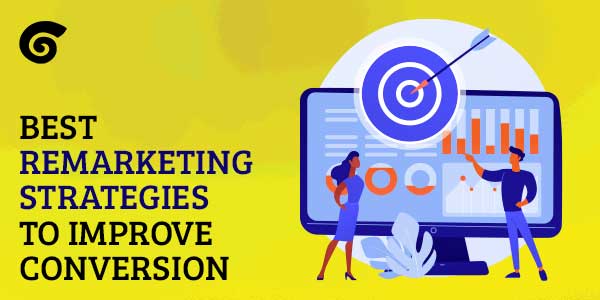Good vendors know that it’s an occasional incidence for a new visitor to land on a website for the first time and buy a product in the same go. So where do the mainstream clients come from? Repeat buyers.
Now a million-dollar question, how can you leverage that information to upsurge our retargeting conversion rates? The answer is simple, REMARKETING.
What Is Remarketing?
Since about 80% of people abandon their e-commerce shopping cart, your main objective should be to finish their purchase. Retargeting principally uses ads to lure attentive prospects back to the website to finish a purchase. This approach works well to turn window shoppers into shoppers. By adding a short piece of code to your website, you will be able to keep a tab of the user’s movements through the cookies policy in their browser easily following them around. Remarketing involves the assembly of your site visitors’ information and then sending them correspondences to encourage them to return to their abandoned shopping cart on your website and complete a purchase.
Strategy 1: Categorize Your Audiences
The first thing you must know about remarketing is how to divide your audiences. Instead of aiming at all visitors with the same ads, you’re going to create exceedingly besieged campaigns based on the activities they have on your site and their interests.
- U-turners: People who left your website in flashes.
- Scrollers: Users who spend a considerable amount of time on the landing page before exiting.
- Browsers: Users who visit multiple pages, spending time on your site.
- Clickers: People click one of your call-to-action requests, but don’t make the purchase.
- Quitters: Users who start the call-to-action process but later quit.
Each of these buyers establishes a different level of buying intent and you’ll need to target them with ads accordingly.
Strategy 2: Use remarketing traffic for signups
Email marketing has proved to get results. Of course, you don’t want to pour your buyers with emails, but on the condition that there are good enticements to sign up, people will frequently feel that it’s a good value for their time. You can use your remarketing traffic to inspire more users to join your email list. If you use precise keywords, you can use Google Ads to promote your email content and influence people to sign up.
Strategy 3: Offer Incentives
Given the importance of turning first-time clients into loyal customers, provide incentives to them. Consumers love discounts and tiny bonuses. If you can offer them this kind of incentive they are looking for, you’ll discover that many of them dive to take advantage. You could offer savings on products they’ve purchased before or which they’ve added to their wish list. On the other hand, you could plug your loyalty program into them or send reminders about products they regularly purchase. If consumers have been provoked by out-of-stock product pages in the recent past, you could also use remarketing to target them with ads letting them know the item is now available.
Remarketing Campaign
- Remarket to people with high intent to purchase
- Target people who are willing and able to buy
- Exclude current customers/clients
- Segment intelligently
- Use geotargeting
- Target non-converting audience segments
- Utilize dynamic retargeting
Conclusion
Remarketing is a great tool to boost conversion rates when carried out properly. There is positively a learning thing, so if you are just in the initial stage, don’t expect the campaign to be a big success. Keep testing, keep trying and things will work out positively.
There are, of course, many other remarketing methods you could use the one we listed here. With a bit of luck, remarketing can increase your ROI and make the most of it. It’s up to you to determine your aims and plan a remarketing strategy that helps you meet them. Good luck!

